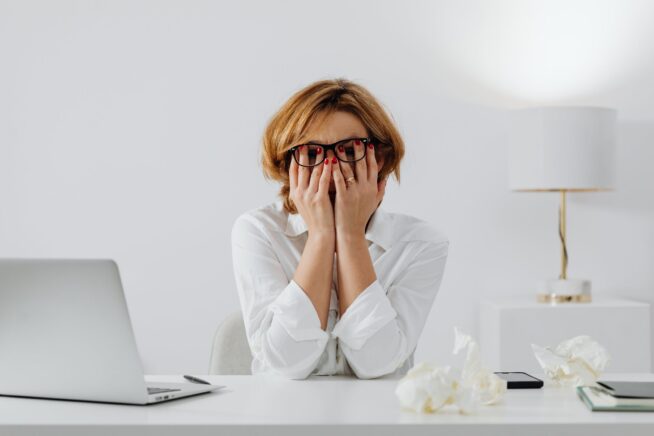Anxiety is part of the human condition. There’s not a person alive who hasn’t experienced it. Anxiety includes feelings of nervousness, fear, and dread. Physical symptoms include lightheadedness, trembling, sweating, racing pulse, and difficult breathing.
Anxiety is generally episodic. You might become anxious before a speech or a test or get triggered by something specific. This form of stress can lead to a full-blown panic attack; that’s why it’s important to try to manage your anxiety as soon as it starts.
Here are three easy to remember techniques you can try next time you feel anxious. They can be easily done, whether you’re at home, at work, on a plane, or anywhere anxiety strikes.
Square Breathing
If it’s hard to catch your breath or your heart is racing, square breathing can help you lower your heart rate and return to your normal breathing patterns.
- Sit up straight and lengthen your spine, lining your neck up with your spine.
- Close your eyes.
- Blow all the air out of your lungs in a big exhale, as if you are blowing out birthday candles.
- Inhale slowly for the count of four.
- Hold your breath for the count of four.
- Exhale slowly for the count of four.
- Hold your breath again for the count of four.
Repeat until you feel calmer. If you lose your place, re-straighten your spine and start over.
The 5–4–3–2–1 Technique
Use this technique to ground yourself and focus your racing mind on something concrete.
- Take one to three slow, deep breaths.
- Look around and identify five things you see — examples: a chair or the light fixture. Keep your attention on each item for a couple of breaths.
- Identify four things you can touch and use your fingers to create a tactile connection with the objects for a couple of breaths — examples: your hair or your shoe.
- Identify three things you hear and focus on the sounds for a few seconds — examples: the furnace or traffic.
- Identify two things you can smell — examples: your shampoo or a flower.
- Identify one thing you taste. Example: coffee or toothpaste.
- End with five slow, deep breaths.
Progressive Relaxation
This tactic can be particularly effective if you feel like your muscles are tense.
- Starting with your feet, inhale and clench the muscles in your feet and toes tightly and hold for a few seconds.
- Exhale and slowly relax those muscles.
- Repeat the exercise, moving up through the calves, thighs, hips/glutes, back, stomach, chest, shoulders, arms, hands/fingers, neck, and face.
- End by inhaling and simultaneously clenching all the muscles in the body, hold for 5–10 seconds, then exhale and relax.
Rose Bak is a freelance writer, author and yoga teacher who lives in Portland, Oregon with her family and special needs dogs. As a dedicated multipotentialite, she writes on a variety of topics including self-care, aging, inspiration, business, and pop culture. She is also a published author of romantic fiction. In addition to writing, she teaches accessible yoga and sings. Sadly, she has absolutely no musical talent so she’s forced to mostly sing in the shower. For more of Rose’s work, visit her website at rosebakenterprises.com or follow her on social media @AuthorRoseBak.
Image courtesy of Karolina Grabowska.












